
Editor| Bowen@Web3CN.Pro
Table of Contents
1. Overview of the Project
2. Project Vision
- Nostr2.0: As a layer 2 off-chain data storage layer for Bitcoin
- Uniswap v4 unveils itself, what are the new features that spark imagination?
- LayerZero OFT: A Solution for “Unified Interoperability” Among Public Chains
3. Features and Advantages
1. Modular Blockchain
- Consensus
- Execution
- Data Availability
- Settlement
2. FuelVM
3. Parallel Transaction Execution
4. Developer Experience
4. Development History
5. Team Background
6. Financing Information
7. Development Achievements
1. Project Development
- Sway Language
- Beta-3 Testnet
2. Community Situation
3. Ecological Projects
8. Economic Model
9. Risks and Opportunities
10. Related Links
1. Overview of the Project
Fuel Network is an Ethereum scaling solution that claims to be the fastest execution layer of a modular blockchain stack, providing maximum security and flexibility for decentralized applications.
Following Celestia, Fuel is another protocol that emphasizes the concept of modular blockchains. In fact, Fuel and Celestia have the same co-founder John Adler, who is also one of the earliest proposers of the Optimistic Rollup scheme. Unlike Celestia, Fuel is positioned as a modular execution layer, while Celestia optimizes data availability and sorting, it does not execute, only processes data availability and consensus.
2. Project Vision
Fuel V1 was originally used as a single Ethereum L2 scaling solution and was the first Optimistic Rollup on the Ethereum mainnet, deployed at the end of 2020. However, the pure L2 is seriously constrained by the performance of the mainnet, and even if the execution layer is separated, it still cannot achieve the goal of complete scaling. Fuel is trying to optimize the underlying layer by modularizing the execution layer and improving the execution state of L2 to truly achieve scaling.
3. Features and Advantages
1. Modular Blockchain
Conventional blockchains require the following parts to run: consensus, execution, data availability, and settlement.
- Consensus
Consensus refers to the mechanism by which nodes agree on which data on the blockchain can be verified as true and accurate. The consensus protocol determines how transactions are ordered and how new blocks are added to the chain.
- Execution
The blockchain execution layer refers to the computing layer where transaction execution and state changes occur. Transaction execution includes checking the validity of transactions (such as verifying signatures and token balances), executing on-chain logic, and calculating state changes. State changes refer to full nodes updating their copies of the ledger to reflect new token transfers, smart contract code updates, and data storage.
- Data availability
Data availability ensures that block proposers publish all transaction data for a block and that the transaction data is available to other network participants. The blockchain enforces rules that require transaction data to be available. This means that block producers must publish the data for each block for peer-to-peer download and storage, and that data must be made available upon request.
- Settlement
The blockchain must ensure that transactions submitted to the chain’s history are irreversible. To do so, the blockchain must be confident in the validity of transactions. Therefore, settlement functionality requires the chain to verify transactions, validate proofs, and arbitrate disputes.
Modular blockchains refer to blockchains that outsource at least one of the four components – execution layer, settlement layer, consensus layer, and data availability layer – to an external chain. Modular blockchains have characteristics such as scalability, flexibility, and convenience in building projects.
Fuel is the first Optimistic Rollup deployed on the Ethereum mainnet and launched its V1 version on Ethereum at the end of 2020. It provides scalability by using a different execution model than the EVM, namely a highly parallelizable minimal execution system based on UTXO, and supports ETH and all ERC-20 tokens. However, due to the low number of users of Fuel V1 and the lack of support for smart contracts, it has not been popular with users since its launch.
Shortly after Fuel V1 was launched, Fuel Labs, the development team behind Fuel, shifted all its development focus to the V2 version, positioning it as a modular execution layer, a verifiable computing system designed for modular blockchain stacks.
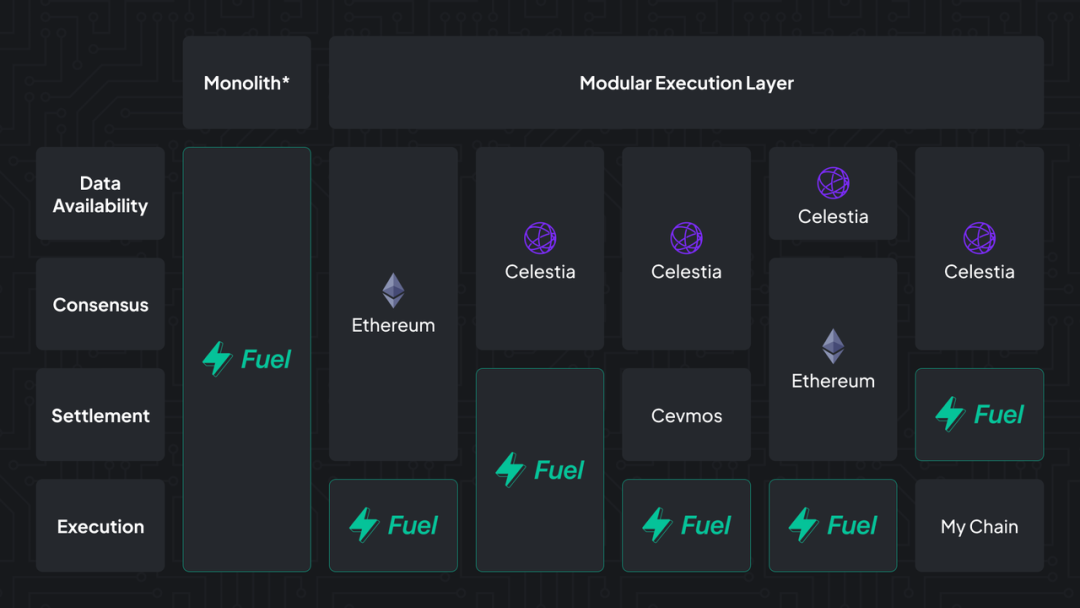
2. FuelVM
Fuel’s biggest feature is its adoption of the new VM architecture, FuelVM, which comes with its own toolchain and language. FuelVM draws characteristics from WASM, EVM, and Solana’s SeaLevel, and its most notable potential is its execution on a UTXO-based data model.
FuelVM aims to reduce waste in traditional blockchain virtual machine architectures while increasing potential design space for developers. Fuel uses a UTXO data model, similar to Bitcoin, where the entire state is represented as a set of UTXOs. The difference is that in Fuel V2, some UTXOs are token UTXOs, while others are contract UTXOs. Unlike token UTXOs, contract UTXOs have code, storage, and a unique contract ID in addition to balance and spending conditions.
3. Parallel Transaction Execution
Fuel uses a strictly ordered state access list in UTXO model form, giving it the ability to execute transactions in parallel and providing advantages in computation, state access, and transaction throughput. Fuel is a UTXO-based blockchain, and its greatest advantage is its ability to execute transactions in parallel, which many other blockchains do not have. The core of this technology is the use of an access list to determine the part of the state that the transaction will modify, thereby achieving parallel execution.
4. Developer Experience
Fuel offers a powerful and seamless developer experience through its own domain-specific language, Sway, and supporting toolchain, Forc. The development environment retains the advantages of smart contract languages such as Solidity, while adopting paradigms introduced in the Rust tool ecosystem and including syntax that utilizes blockchain VMs. To address the problem of state growth, FuelVM uses two programs, scripts and predicates, to enhance Turing-complete smart contracts.
IV. Development History
2019.10.24 Fuel Labs releases Ethereum scaling solution Fuel
2020.01.13 Fuel, an Ethereum sidechain based on Optimistic Rollup, launches a public testnet
2021.01.01 Ethereum Optimistic Rollup scaling solution Fuel 1.0 launches on mainnet
2021.09.21 Fuel Labs raises $1.5 million in funding, led by CoinFund
2022.09.07 Fuel Labs raises $80 million in funding, led by Blockchain Capital and others
2022.09.09 Fuel Labs unveils modular execution layer Fuel Beta-1 testnet
2022.11.16 Fuel Labs unveils modular execution layer Fuel Beta-2 testnet
On March 21, 2023, Fuel Labs launched the modular execution layer Fuel Beta-3 testnet, which added P2P networking and the ability to run full nodes in sync.
V. Team background
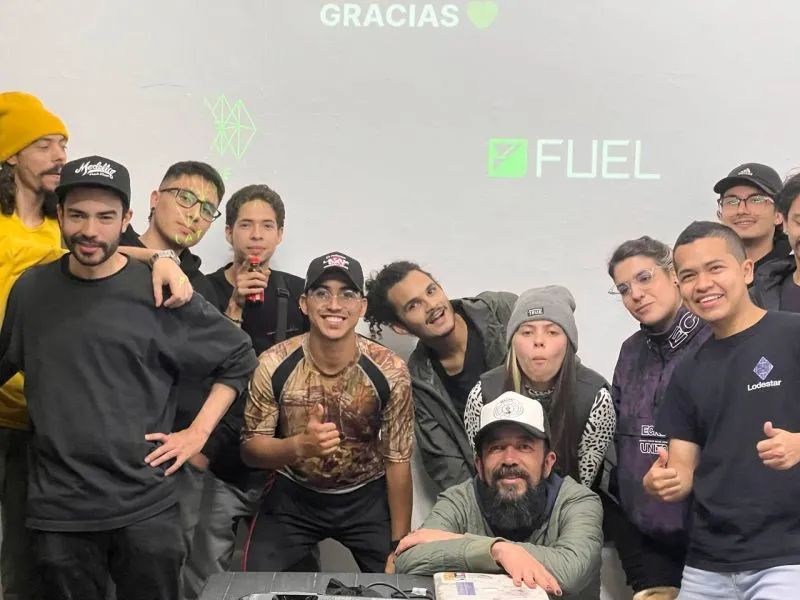
Fuel Labs has over 60 engineers and provides the blockchain ecosystem with the highest security and flexibility throughput. Co-founders are Nick Dodson, Samuel Borin, and John Adler. John Adler is also the co-founder of the Celestia Labs project and helped pioneer Optimistic Rollups while working as a blockchain researcher at Consensys. Dodson is an early Solidity developer for Ethereum. Emily Herbert is a computer scientist and Sway language expert at Fuel Labs.
VI. Financing information
On September 21, 2021, Fuel Labs announced a $1.5 million funding round, led by investment firm CoinFund, with participation from Fenbushi Capital and Origin Capital.
On September 7, 2022, Fuel Labs announced the completion of an $80 million funding round, led by Blockchain Capital and Stratos Technologies, with participation from Alameda Research, CoinFund, Bain Capital Crypto, TRGC, Maven 11 Capital, Blockwall, SBlockingrtan, Dialectic, and ZMT.
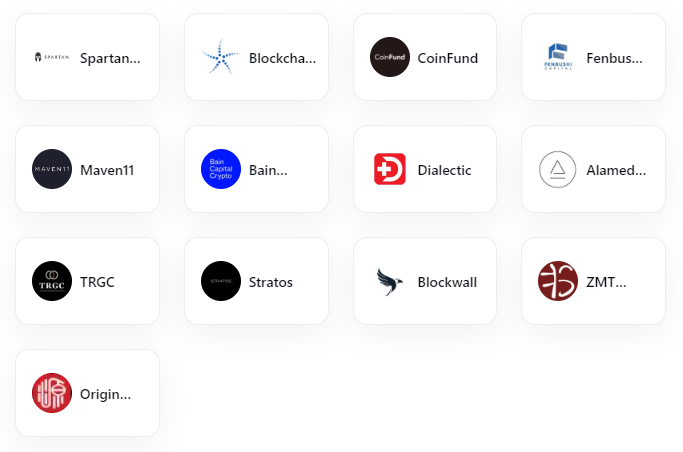
Investor
VII. Development achievements
1. Project development
- Sway language
Sway is a language for building smart contracts and applications on top of Fuel. It is primarily based on Rust but retains the benefits of other smart contract languages like Solidity and offers the Force toolkit.
Fuel Labs has announced upgrades to the Sway language that it plans to implement by 2023, including compiler optimizations on bytecode size, support for more backends (EVM backend is already under development), more economical abstractions, more applications migrating from Solidity/Vyper to Sway, and improved compiler-level reentrancy analysis.
- Beta-3 testnet
On March 21, 2023, Fuel launched the third public testnet Beta-3, which added P2P networking and the ability to run full nodes in sync on Fuel. Beta-3 is not an incentivized testnet, and participation in the network does not result in direct rewards. Fuel plans to launch the full mainnet in 2023.
2. Community
- Twitter: 121,000 followers
- Discord: 110,000 members, relatively active
3. Ecosystem
Besides the official DEX SwaySwap, Fuel Network also has other ecosystem projects including DeFi, NFT, infrastructure, and other categories.
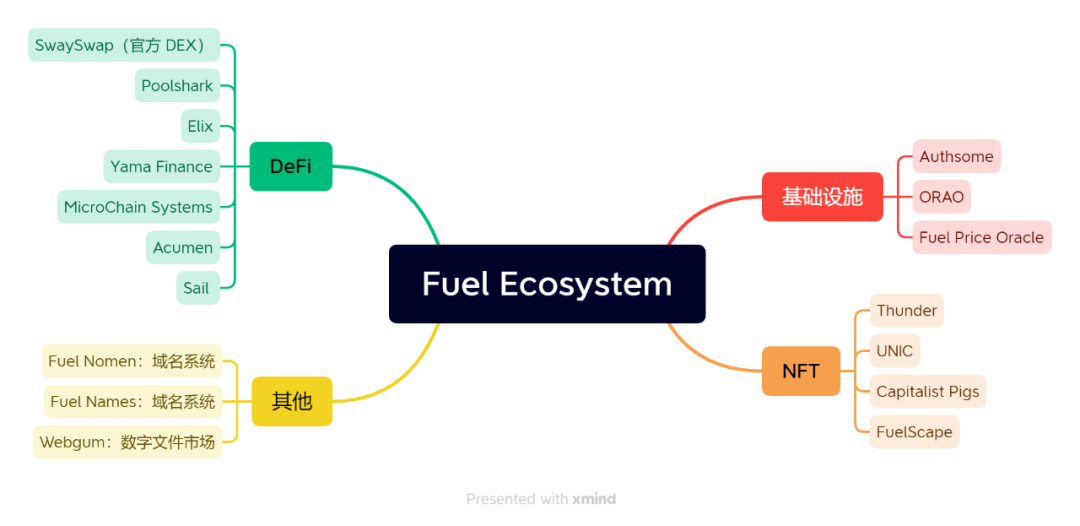
8. Economic Model
Currently, Fuel has not launched its token yet.
9. Risks and Opportunities
Modular blockchain will be the trend of future blockchain development, and many cutting-edge projects have emerged around execution layer, data availability, etc., which may lead the user experience of blockchain to a new level.
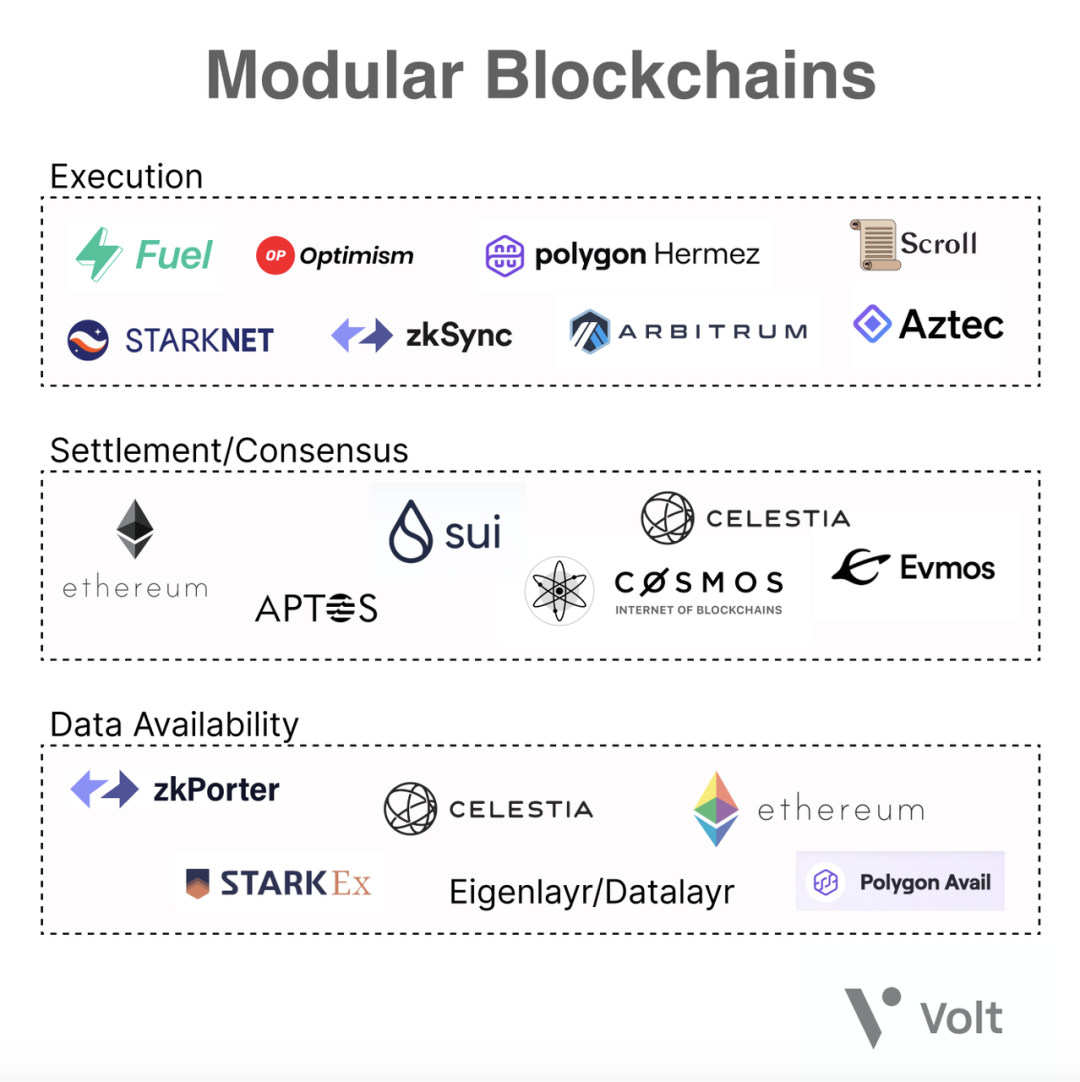
Currently, Fuel has announced the launch of a grant plan and the beta-3 testnet. The mainnet is expected to launch soon, and interaction can be carried out on the testnet.
The interaction steps can refer to the link below, and the Fuel wallet (similar to Metamask) is used for testing and can receive test coins, with no risk of participation.
10. Related Links
Fuel official website:
https://www.fuel.network/
Fuel interaction tutorial:
https://mirror.xyz/leohu.eth/f1XNnoGwAqMIQTuu8x4cQ_l-dfdmgI5eYHIExXETKu8
Fuel wallet download address:
https://wallet.fuel.network/docs/install/
Reference:
https://news.marsbit.co/20230404184352284841.html
https://www.techflowpost.com/article/detail_10826.html
https://foresightnews.pro/article/detail/18936
https://foresightnews.pro/article/detail/20188
https://foresightnews.pro/article/detail/18613
Like what you're reading? Subscribe to our top stories.
We will continue to update Gambling Chain; if you have any questions or suggestions, please contact us!